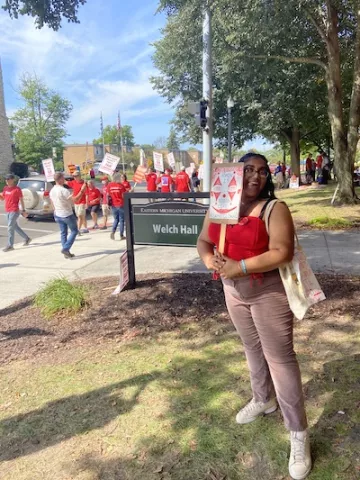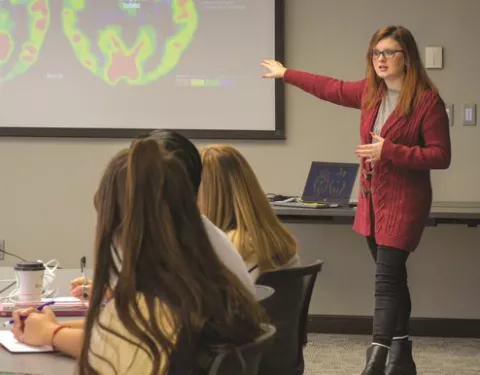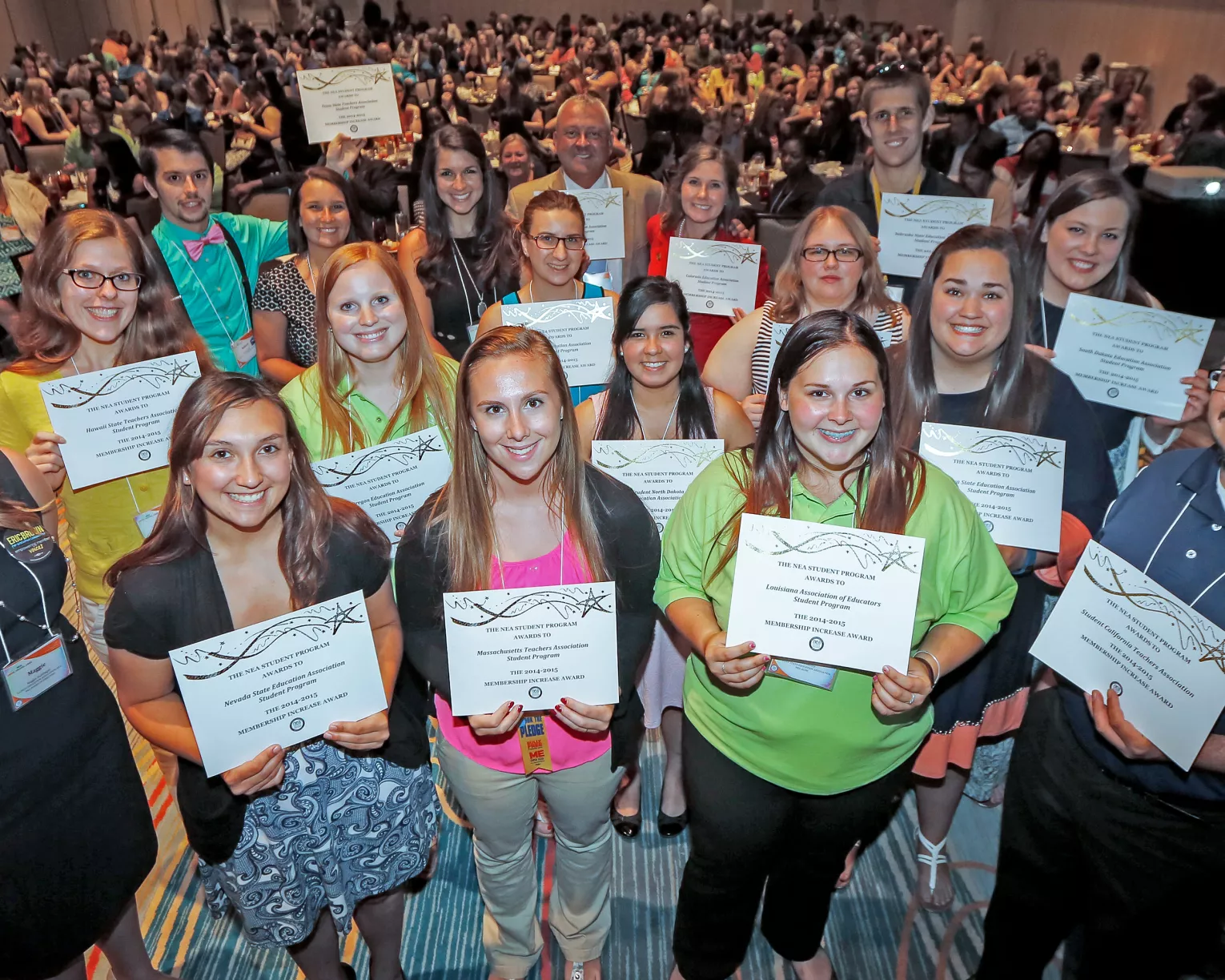Key Takeaways
- Support for unions among Gen Z is higher today than it was among Baby Boomers.
- This includes Aspiring Educators who are organizing their campuses to increase membership.
On a hot Saturday morning just two weeks into the school year, Eastern Michigan University (EMU) sophomore Aryana Jharia pulled on her red shirt, grabbed her sign reading, “Admin is looking like a damn clown,” and walked across campus to meet about 45 protesting professors. Together, the protestors, clad in “#RedForEd” T-shirts, marched in a loop chanting, “Settle the damn contract.” (#RedForEd is a grassroots movement to secure more school funding and resources that benefit students and educators.)
The striking professors were union members who believed the university’s negotiators were dragging their feet after the faculty’s contract expired. The biggest issue? Faculty pay. On Sept. 12, the day after Jharia joined the protest, the two sides reached a tentative agreement, and EMU educators returned to their classrooms.

Jharia, who is co-president of the Aspiring Educators (AE) chapter on her campus, said this was her first direct exposure to the power of unions.
“It makes a huge difference to have that experience because it’s like, wow, this is a real issue—professors and teachers don’t get paid enough,” she says.
Gen Z is America’s most pro-union generation, according to a report from the Center for American Progress. Support for unions among Gen Z is higher today than it was among Baby Boomers and Gen Xers at their age.
Nationwide, approval for labor unions is at 71 percent—the highest it’s been since 1965, according to a recent Gallup poll. Respondents said their most important reasons for joining were better pay and benefits, employee representation, and job security.
UNIONS ON COLLEGE CAMPUSES
When the professors went on strike at EMU, they had support from many of the university’s education students, Jharia says. Still, many students on campus had no idea what was going on.
Jharia adds that the strike provided students with a great opportunity to learn about unions and to start a conversation about the trend toward unionization on college campuses in the U.S.—especially among undergraduate and graduate student workers.
These students are forming unions so that they can organize for better pay, better access to affordable health care, and improved working conditions. Student membership in unions quadrupled between 2013 and 2019, and the pandemic has fueled even more unionization.
For her part, Jharia was inspired to start an AE college chapter back in high school, where she met members of the Michigan Education Association at a summer program. Despite being nervous about launching a club as a first-year student, her efforts have been successful. At EMU’s club fair, about 80 students signed up to join AE.
BRINGING MORE PEOPLE INTO THE MOVEMENT
At the University of Northern Iowa (UNI), Abbigail Ericson has had a tougher time finding support. As Iowa AE chair, she says most education students belong to specific education-related clubs and may not understand the benefits of NEA membership just yet.
Ericson understands union benefits because her parents are teachers and NEA members. Her friends joke that she’s “union born and bred.”

“I know there are people like me all across the state, somewhere,” she says. “We just have to [provide] the right resources to get them excited about education and driven toward the union, so we can make some real change.”
Now a senior, Ericson has been involved in her AE program throughout college and is focused on growing the campus chapter, after membership declined during the pandemic.
“We’re building back up now, and I could not be more excited for where we’re at and where we’re going,” she says. “[We’re] hoping to make enough noise to get attention at the White House and on a local level.” Iowa AE currently has about 90 members, down from 125 when Ericson first joined. She said membership dropped as low as 35 members during the pandemic.
“I would just love to get people aware of what they could be experiencing, the network they could have, the union family they could be part of,” Ericson says.
“You don’t have someone fighting for you as a teacher if you’re not part of the union.”
Like Ericson, University of Indianapolis senior and Aspiring Educator Dylan Torres is working to grow membership. Torres first got involved with his campus chapter this year, after most of his college experience was shaped by the pandemic. He said the program is his first exposure to unions, although he thinks of the group as more of a club.
Torres is the membership coordinator for his school’s chapter, which means he keeps track of people who attend events and focuses on campus outreach to students and clubs.
While there are seven core board members, over 250 students attended a chapter event at the start of the school year.

“We definitely have had a lot of interest, and people come out to our events, but we’re still working on retaining that body of educators in our community,” Torres says.
Back in Michigan, Jharia is using social media to drum up interest in her campus chapter. She created a chapter Instagram account and started reaching out to incoming education students to generate excitement about joining the group.
UNIONS AND SOCIAL JUSTICE
For many young people, unions are closely tied to social justice issues, which have high importance among Gen Z.
“Our age group has seen so much injustice … in the world,” Ericson says. “As a generation, we’re realizing that we need to take care of ourselves personally, and if we don’t make any noise, we’re not going to make any change.”
She says that growing up in a lower-middle class household taught her to fight for herself and others from a young age. She began protesting for better teaching and learning conditions with her parents at the age of 3.
Ericson explains that she sees clear connections between the disability
rights movement and unions in ensuring that students with disabilities receive a satisfactory education.
Similarly, Jharia says she sees connections between unions and women’s rights. Union support is higher among women (74%) than men (68%), according to the Gallup poll.
Ericson thinks the next generation of teachers is ready to rise to the challenges before them. “We’ve lived through a teacher shortage before. We lived through a recession. We know what we have to do,” she says.




